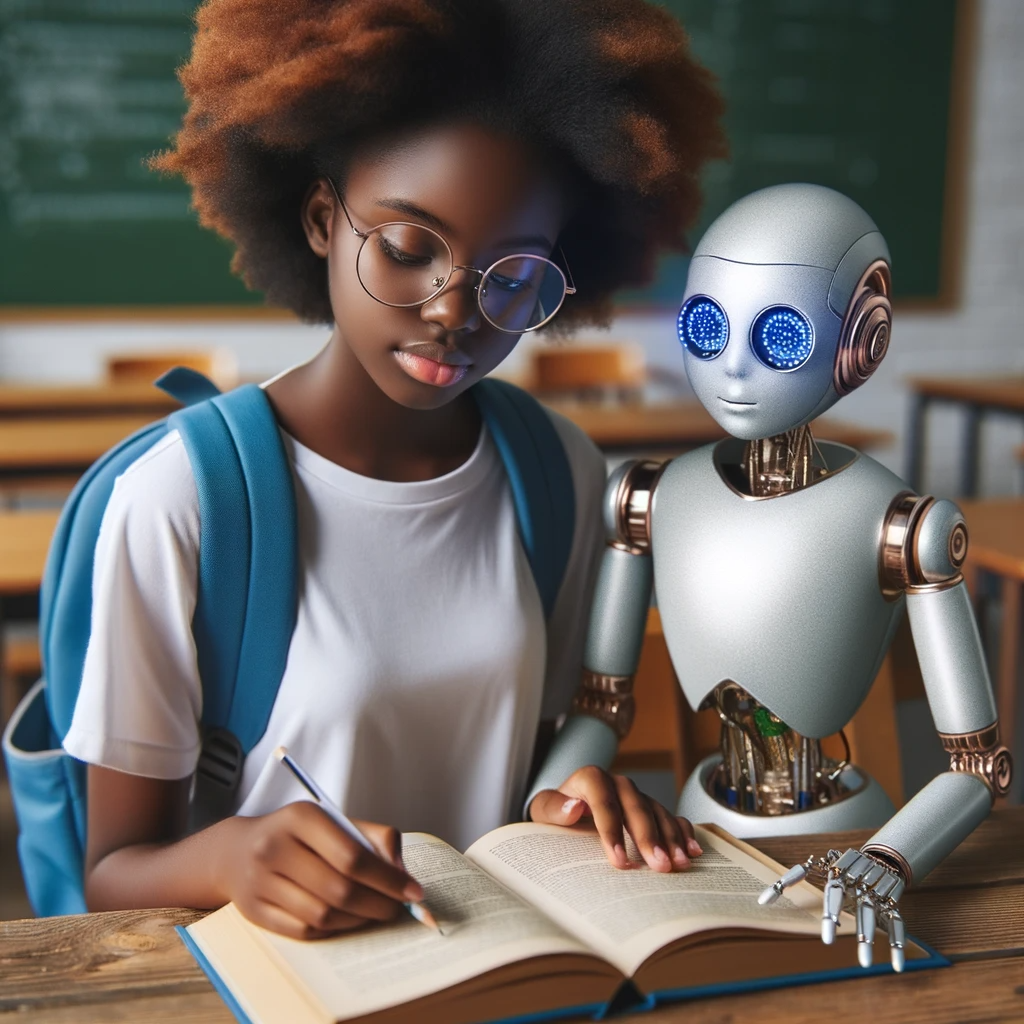Imagine a high school classroom where students work in small groups on a collaborative poetry project. Some groups have an AI assistant that suggests rhymes or lines to enhance the emotional impact of their poem, while others do not.
The students with AI support easily complete the assignment, relying on the AI to generate most of the content. Meanwhile, the other groups struggle without the computational aid of AI.
Initially, AI may seem like a shortcut to success. However, as students explore the creative process further, they realize otherwise. AI, while efficient, lacks a certain tangible element crucial to creativity. It becomes evident that the realms of reflection, collaboration, and the creative tension born from the juxtaposition of scarcity and abundance of resources are where the true essence of learning and creativity lies.
This situation brings up an important question: as AI becomes more common in education, how can we promote genuine collaboration between humans and AI, without relying too much on AI or replacing human creativity?
Many worry that AI will take over human roles in the classroom. But the truth is, humans and AI can work best as partners, like musicians playing together in an orchestra, each role played contributing to the whole. Embracing this partnership requires a change in mindset for both students and teachers.
Explore Collaboration, not Competition, with AI
Students need metacognitive awareness of their own multifaceted human intelligence – making connections, contextualizing knowledge, and handling nuance:
- Rather than compete with AI, students should learn when and how to utilize it as a tool – determining the overall direction while AI assists with specific tasks.
- Understanding AI’s Role:
- Use case studies to show successful human-AI collaborations in various fields.
- When and How to Utilize AI:
- Create scenarios where students can practice deciding when to use AI and when to rely on human intelligence.
- Implement projects that require both AI and human input to solve problems collaboratively.
- Nurturing Human Skills:
- Focus on developing human skills like critical thinking, emotional intelligence, and creativity.
- Have students reflect on instances where human intuition or creativity was crucial.
- Building Synergy:
- Create a classroom environment that also values the combined contributions of humans and AI.
- Design assessments to measure both AI utilization and the development of human skills, emphasizing the importance of a balanced approach.
- Understanding AI’s Role:
- Teachers should design activities with explicit roles for collaborative human-AI learning.
- Normalize saying “Ask AI for help when…” to instill the practice of deliberate AI integration, distinct from the direct and reliable “Google it!” for factual queries.
*Note: It’s important to understand the roles of Google and AI in information gathering and problem-solving. Google is reliable for quickly retrieving accurate data, while AI, although becoming increasingly sophisticated and even capable of real-time internet browsing (such as ChatGPT4, Bing, Bard, and Perplexity), can sometimes provide less reliable information due to errors or “hallucinations.” Educators and students should use search engines like Google for fact-checking and research. AI is useful for brainstorming, exploring complex concepts, and creative problem solving, but not as the main source for factual information.*
- Another way to incorporate it would be through planning activities that foster collaboration instead of competition. Here’s an example of how:
- In one of our recent lesson plans entitled “Q, Me, and & AI: Collaborative Question Crafting for Deeper Learning,” the class is divided into two teams: Team AI and Team Human. Both teams read the same required material, but their approach to questioning is different. Team AI utilizes artificial intelligence tools to generate questions, harnessing the potential of technology for insights, while Team Human relies on their creativity and intuition.
- The two teams then exchange their sets of questions, giving them a chance to review and appreciate different perspectives and methods. They take note of similarities and highlight unique and insightful questions, which sets the stage for a meaningful group discussion. Students actively participate in dialogues, unraveling the layers of understanding found in the diverse questions and promoting critical thinking.
- During the reflection phase, students are encouraged to think about the combination of human intuition and artificial intelligence. They evaluate how this synergistic approach enhances their learning and gain insights from the contrasting yet complementary perspectives.
Exercises such as these emphasize the importance of collaborative learning, going beyond traditional educational boundaries. They reflect the idea that the future of learning is not about AI versus Human, but rather AI & Human – a harmonious coexistence that deepens understanding and promotes learning.
Adapt Curriculum to Integrate AI Collaboration
Rethinking curriculum establishes human-AI collaboration as the norm. Schools can adopt AI tutors for individualized practice while using class time for collaborative projects. Incorporate AI into assignments where it adds value and provide clear guidelines on its optimal use. Workshops can guide students on interacting effectively with AI, evaluating its outputs critically. Ethical considerations of AI use and reflections on its societal and personal impact should be integral to the learning journey.
How?
- Incorporate AI into Assignments:
- Identify specific assignments where AI can add value, such as data analysis projects, brainstorming tasks, or problem-solving exercises.
- Provide guidelines on how students should utilize AI, ensuring they understand its role as a supportive tool rather than a replacement for their own efforts.
- Student Interaction with AI:
- Organize workshops or tutorials that guide students on how to effectively use AI tools, focusing on critical evaluation of the generated outputs.
- Assign tasks that require students to compare the outcomes of their own work with AI-generated results, fostering an understanding of AI’s capabilities and limitations.
- Ethical Considerations:
- Integrate discussions and case studies into the curriculum that explore the ethical dimensions of AI, such as bias, privacy, and decision-making transparency.
- Encourage students to engage in debates or write essays on the ethical implications of AI, promoting critical thinking and ethical reasoning skills.
- Reflect on AI’s Impact:
- Create reflection assignments where students analyze and write about their experiences working with AI, focusing on its influence on their learning process.
- Facilitate group discussions where students can share their reflections, allowing for the exchange of diverse perspectives on the integration of AI in education.
What Now?
To realize the potential of human-AI collaboration requires cultural and pedagogical shifts in education. Students and teachers must approach AI as partners, not competitors or tools. Learning activities must nurture collaborative skills between humans and AI systems. By planning ahead, we can prepare a new generation to effectively use both human and artificial intelligence.





